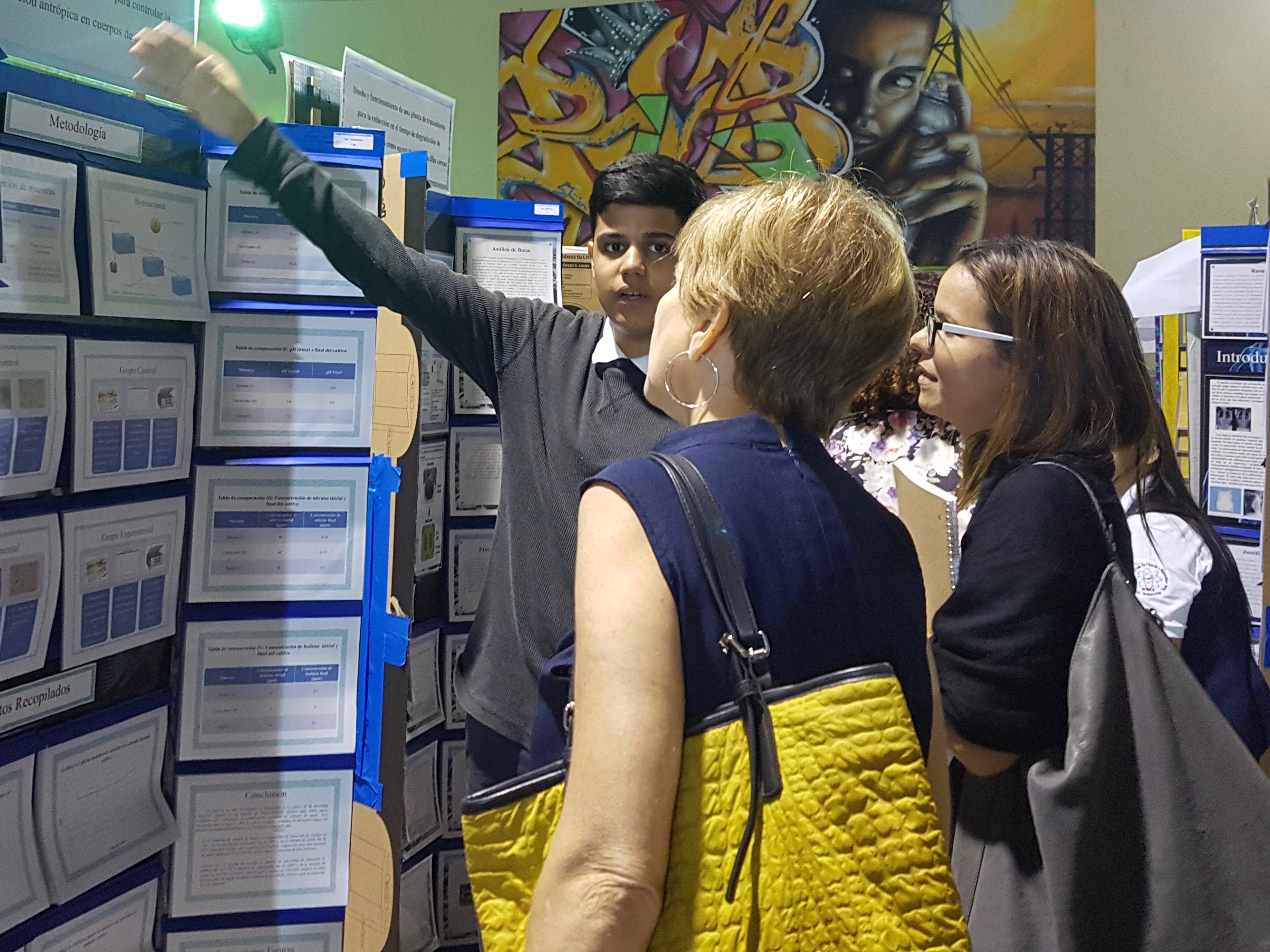[vc_row][vc_column][vc_column_text]
(PONCE) While Hurricane Maria devastated our physical infrastructure and the emotional wellness of great part of our population, young people are enlightening the way with their insatiable search for knowledge, their passion and their strong pace towards the future.
The scientific research of public school students from the Ponce, Yauco, Santa Isabel and Utuado School districts was presented at the Science Fair in Ponce during three consecutive days, culminating on May 1st. Intellectus Foundation wanted to visit this scientific exhibition to confirm how the foundation’s support to the Thomas Armstrong Toro, a specialized school in science and mathematics, is turned into a better education for our children. A valid question for any institution that sponsors other institutions, and, in our case, that hopes to contribute in the professional development of medical students, health and science in Ponce and the South region.
Knowing first-hand the skills, research methods, and the interests of these students is impressive. With scientific precision, an 11th grader explained how she studied the effect of chlorophyll on cancer affected cells, her findings and possible future research. Other students talked about researching the effectiveness of some plants and leaves available on many of our backyards and gardens. The enthusiasm stands out because of how they’ve made it their mission to contribute something to the research of cancer, a condition present in many Puerto Rican families.
Other students worked on projects that could have a direct impact on our agriculture. One of the investigations may give an answer to get rid of sigatoka, which is a leaf-spot disease that affects banana plants. Under the same topic, the repercussions of organic pesticides on bees in the island is also being researched and a possible cause for the decrease of the crab population at the Ponce Beach has been identified.
Among the variety of projects, they have designed tools for the measurement of cement particles in the air, a prototype of a chair that adapts to specific health conditions and a conceptual design for a tire disposal treatment facility. Social issues that affect deaf children, terminally ill patients and the elderly are also being researched. I conclude the examples of the investigations that were presented with a project that studies the effect of gold nanoparticles on some treatments and I clarify that these are only some of the projects that were shown. It is worth to stop now and remind you that I am talking about 11thgraders from our public schools.
While the political circles desperately seek solutions for a distressing reality and hopelessness turns into our common state, these students represent a ray of hope. Their enthusiasm, their multiple views over an issue, their analytical accuracy, the variety of topics they’re capable of researching together, they showed the results of academic work worth of support.
They also showed the basis that sustains the hope of reconstructing a new country with them.
By: Elena M. Colón / Executive Director
Published by Noticel
http://www.noticel.com/opiniones/inteligencia-social/vuelo-a-la-esperanza/714025837

